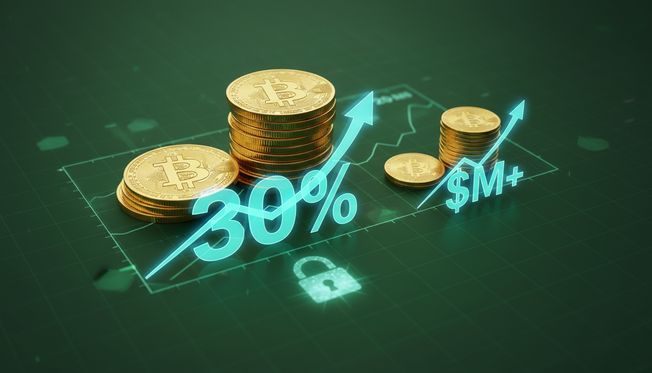
1. WILL I BE POORER?
Some of us will, others will not.
In order to give a clearer answer, the question must be asked more precisely. The question must be: Will I be poorer compared to x? And you must decide whether x should be (a) today, (b) what you would have been if humanity rose to the occasion and ran a rational world, or (c) relative to your peers.
Furthermore you must be precise about what future time you are asking about. Is it 2052? Or the halfway mark, 2032? You do remember, I hope, that the average income path to 2052 will not be a straight line. Per capita consumption in my forecast grows to a peak sometime within the next 40 years and is in decline in 2052—details depending on where you live.
If we’re willing to sacrifice some precision, though, I can provide this general answer: As long as you are not a citizen of the United States, you will be richer in 2052 than you are today. But only slightly so, unless you live in China or BRISE. I can add some detail: you will be much poorer than you would have been in 2052 if a benevolent dictator took control in 2012 and forced through the necessary investments to keep everyone employed and global warming below plus 2°C.
And I can add: Unless you do something very stupid (or very unconventional) during the next 40 years, you will be in the same position vis-à-vis your neighbors and peers as you are now. Both you and your peers will experience the same parallel development over the next 40 years. The only exception is if you are presently very affluent. Then it may be that your social rank will have declined through the processes of redistribution, which I believe will occur during the next 40 years in order to reduce some of the tension implicit in the rapid increase in inequity in the capitalist world.
Finally, I will give you a piece of uninvited advice: Yours is the wrong question. You should not ask, “Will I be poorer?” You should rather ask, “Will I be more satisfied?” Whether you are satisfied with life is more important (for you) than whether you are somewhat richer or poorer. Empirically, for some, income is the sole determinant of life satisfaction. But for the majority, a whole host of factors influence our well-being—job, health, family, community, prospects for the future—in addition to income. It is the sum total of all aspects of life that determine your well-being, both now and in the future.
So when you privately assess the implications for yourself of my global forecast, try to judge what it will mean for your well-being, not only what it will mean for your income.
2. WILL THERE BE ENOUGH JOBS?
Yes.
Or to be slightly less flippant: there will be as many jobs in the future as there have been in the past—relative to the workforce, that is. Or to be more scientific: there is little reason to expect that underemployment will be much higher (or lower) in the future than it has been over the last generation. This means that 10% of those who would like to get a paid job won’t get it overnight. The number will be closer to 5% during business upturns and closer to 15% during downturns. In the future, like in the past.
The reason is simple. A job is absolutely crucial from the point of the individual in industrial and postindustrial urbanized society. It is the only way in which the individual can get part of the societal pie–without engaging in theft. Since a job is crucial, the individual will do his utmost to obtain one. And society–at least in the long run–will do its utmost to ensure there are jobs, typically by seeking rapid economic growth. But we know from recent history that this is a taxing task, and that politicians often fail. As a result we do experience lengthy periods of excessive unemployment, even in the advanced economies. And the task of securing full employment may become harder in the future, since I forecast lower growth rates in GDP.
But given the importance of employment for societal peace and order, and given the real fear among the elite about a reshuffling of the cards, the necessary effort will be applied–sooner or later. The reason why I am willing to state this so blatantly is that the task is solvable in principle. When the unemployment problem is not solved in the short term, it is because society is not immediately willing to use the tools that the ruling elites actually have at hand. Because these tools imply taking from the rich (those with a job) and giving to the poor (those without a job).
For in the end the rulers can print paper money and pay unemployed people to do what society needs to get done, in return for the paper money. For example, politicians can decide that society needs to build dikes to protect against rising sea levels, or remove litter from public places and highways, or paint all roofs white (in order to reflect more sunlight and reduce global warming), or create new pieces of art for public enjoyment. And they can print the necessary money to pay for this work. The new money will boost demand for everything that the workers need–food, shelter, energy, vacation–and have the traditional expansionary effect. The cost will be higher inflation, but that bothers the rich more than the poor. As long as there are underutilized resources in the economy, deficit financing of compulsory work for the state is sustainable. It is possible to lower unemployment by printing new money. But the rich will scream. Because they will see this for what it is: namely, a transfer of wealth and income from the rich to the poor.
If the elite is stupid enough not to solve the unemployment problem within reasonable time, revolution (or at least sufficient rattling of the system to get crisis work going) will result. Such disruption will lower incomes in the short term, but it will distribute the cards in new ways in the longer run and therefore provide new opportunity for the formerly unemployed. Disruption makes unemployment more bearable, and probably gets it back down into the 10% range.
So I see little reason why there should be higher levels of unemployment in the future. But that is not the same as saying there will be smooth sailing. Unemployment figures will continue to fluctuate between the barely acceptable and the totally unbearable. And all along there will be unnecessary suffering.

3. WILL THE CLIMATE PROBLEM HURT US?
Yes, but not critically before 2040.
My forecast shows in quantitative detail how I believe the global average temperature will increase over the next couple of generations. The average temperature will go from plus 0.8°C relative to preindustrial times in 2012 to plus 2.0°C in 2052, and a maximum of plus 2.8°C in 2080.
The forecast maximum in 2080 is above the threshold that world leaders agreed would place us in the danger zone for runaway climate change; but it is important to realize this is a politically negotiated goal. Views differed, and still differ, on what will be safe. Or in other words, what will hurt us.
There is a large body of literature about what will happen at plus 2°C. Science agrees on the broad lines–more drought in drought-prone areas, more rain in rainy areas, more extreme weather (strong winds, torrential rains, intense heat spells), more melting of glaciers and the Arctic sea ice, somewhat higher sea levels, and a more acidic ocean, in addition to the higher temperature and the higher CO2 concentration in the atmosphere that will boost food and forest growth in higher northern latitudes. Ecosystems will move poleward and uphill.
But science cannot yet predict the detailed strength and regional distribution of these impacts. Thus it is impossible to forecast what will be the effect on your surroundings over the next generation. But you can get a strong indication if you start looking slightly beyond science. By asking locals in daily contact with nature, you will get to know what has changed over the last 20 or 40 years. You can do worse than assuming that these changes will strengthen during the rest of your life.
Let me give a concrete example. The only rational reason to live in a cold, northern city like my hometown of Oslo during the dark subfreezing period from mid-November to mid-March is the great opportunity for cross-country skiing (ideally on moonlit white glades in the pine forests just north of the city) on the one meter or so of cold fluffy snow that covered the ground until the last real winter in 1986.
But over the last 25 years, the average winter temperature in Oslo has gone up by plus 2°C. This has shortened the period of stable cold weather from four to two months. Instead, we now have two months of good skiing and two months of wet, gray, and cold slush, which keeps the forest dark and makes it impossible to even go jogging there after work. One-half of the Oslo winter is gone, sacrificed on the altar of climate change. This is clearly visible in the eyes of someone who has been skiing regularly over the last fifty years. It is discernable in the snow statistics, but it is not yet an established fact in the urban public mind. And certainly not institutionalized in a strong Norwegian climate policy.
This loss of skiing is a nuisance, but not catastrophic. As is the prolongation of the dry period in the western United States, or the increased number of very hot days in Provence. But they do constitute a loss. And a longing, among the grown-ups, for the good old days. A little more problematic, to say the least, is the slow rise of the ocean level around those Pacific islands that will be submerged if the ocean actually rises by a meter—just twice the expected sea-level rise by 2052.
So if you want to find out how climate change will hurt you, ask a local elderly outdoorsman or old farmer what he believes is going on. And then try to answer the question “Will I be more satisfied?” under the conditions that he thinks are emerging. But please be aware how subjective the answers you get will be: Most Norwegian farmers living next to my moonlit skiing forest are delighted at the prospect of higher temperatures, better forest growth, and the opportunity to clear-cut more often, with less snow bothering the cutting operations.
4. WILL ENERGY BE MORE EXPENSIVE?
Yes.
But once more, the precise answer depends on the detail in your question. Let us start by deciding what cost you are thinking about. Is it your total energy bill (in hard-earned dollars per year)? Or the national bill? Or the cost per unit of energy (in dollars per kWh of electricity or gallon of gasoline)? Or is it the share of the economy that is engaged in getting hold of all the energy that is needed to run the economy (measured as the percent of GDP in the energy sector—which should include those export sectors that are required to finance the importing of energy, if there is importing)?
I can answer only some of these questions, and the answers differ with the precise questions asked. The average per-person use of energy will increase. But only for a while–energy use per person peaks around 2040. So we will each have more energy available to us for some decades, until growth slows and growing energy efficiency leads to reduction in our annual use of energy.
So we will use more energy–more tonnes of oil equivalents of energy per person per year–until the 2040s. But will this cost more? I can’t predict in detail. My spreadsheets tell me that the energy intensity of the economy will decline monotonically from 300 kilograms of oil equivalents per $1,000 of GDP in 1970 to 180 in 2010, and some 120 in 2050. This means that the value created per unit of energy used will increase dramatically, which also means that the share of total value creation that is expended on energy is likely to decline. But I can’t say for sure, for it depends on whether the new forms of energy, replacing increasingly the old fossil sources, will prove to be very much more costly than power and heat based on coal, oil, and gas.
More simply put, after much empirical work, I have concluded that I think that future energy may be 30% more expensive than current fossil-based energy. During an initial introductory period the renewables will be even more costly, but in the long run I believe solar, wind, biomass, and CCS will be available at current prices plus 30%.
So in answer to your question: I believe energy prices will increase per unit of energy by one-third. But since the energy intensity will fall by 50% to 2052, your absolute bill per year may even decline. And the energy cost will be a declining share of the GDP, which will grow by more than 100%. But that is on a 40-year horizon; in the meantime, while society is increasing its investments in order to help the transition from a fossil-based toward a renewables-based economy, energy will be more expensive.
The percentage of the GDP that is in energy production gives a reasonable approximation to how energy prices will “feel” for you as a consumer. The percentage of the GDP in energy production translates (very roughly) to the percentage of the time you have to spend paying for your energy use.
The Institute for Energy Research (IER) in the United States has tried to estimate the share of energy in the world GDP. In 2005 some 8% of the U.S. GDP was in the provision of energy. It means that (roughly) 8% of all labor and physical capital was used to obtain energy. The share has varied quite a bit over the last 40 years. It started at 8% in 1970 and then rose to 14% after OPEC raised oil prices in the 1970s. It then declined over two decades to 6% during the years of recovery of the U.S. economy after the oil shock. Since the year 2000 the share in energy increased once more, to 9% in 2006. The IER estimates that the equivalent number for the world economy is also 8%.
So this means very roughly that the average global citizen is spending one-twelfth of his or her time paying for energy, and that this could increase to one-eighth during the transition to a renewable future.
So energy will be more expensive, but not very much so, as I see it. The fundamental reason is the fact that one can even today produce clean power and heat from coal at a cost (using CCS) that exceeds the cost of conventional coal-based power and heat by only 50%. And coal with CCS will act as a near infinite backstop technology, keeping a lid on energy prices in the long run. I am obliged to stress that many informed people disagree with this estimate, which I base on engineering assessment of the (significant but finite) efficiency loss in CCS. My critics believe CCS will be much more costly. If they are right, it means that CCS will not be used, or at least not until later in the day. The effect will be to lower your energy bill in the short term and lengthen the period of transition to a low-carbon future.
In summary, the main reason why energy costs won’t rise more in the short term is that humanity will be slow in making the transition to renewable energy. In 2052 a full 60% of the energy used will still be fossil. As a result climate damage will be growing fast, as will the unavoidable costs for repair of that damage. Paradoxically this means that humanity will choose to pay bills for repair after the crises, rather than paying the same amount of money for renewable energy ahead of time and avoiding the damage.

5. WILL THE YOUNG GENERATION CALMLY ACCEPT THE (DEBT AND PENSION) BURDEN OF THE OLD?
No.
I am now moving up the ladder of abstraction to look at some intangible issues beyond the more tangible questions of income, employment, climate damage, and energy costs.
The first issue concerns intergenerational equity, and it is particularly relevant in the industrial and emerging economies where the old ways of solving rights and obligations between the generations (and sexes) have been most dramatically changed over the last couple of generations. In the rich world, particularly, the first generation that has rung up a huge national debt and established a huge unfunded pension scheme is about to retire. The interesting, to say the least, question is whether the next generation will be willing to carry this burden and peacefully pay the debt and peacefully pay the pensions. I repeat my answer: I think not.
The simplest reason is they don’t have to. They are legally obliged but can’t be physically coerced. If they choose not to and stand shoulder to shoulder, there is little the elderly can do. The old will lose the intergenerational war if push comes to shove. The second reason is that we can already see that the burden is being shed. In forward-looking, well-organized countries, pension schemes have already been revised–in order to lower future payments. Greece was the first country to shed the sins of the fathers–and got the rest of the world to pay for one-half of the debt of the old generation. Former homeowners in the United States have started the struggle to get back some of the wealth that ended up in the financial institutions.
These processes will continue, I believe, although it is hard to tell what will be perceived as the equitable balance point in the distribution of well-being among the generations. But there is little doubt that the current situation (read: legislation) excessively benefits my post–World War II generation.
If we add impending climate damage into the intergenerational perspective, my generation looks even worse. Because then it is not only the current young but also the unborn future generation who are losing out. They have to live with the CO2 emitted during my generation’s partying during the last 40 years. Many argue that this does not matter because we are leaving for future generations a whole lot of capital, infrastructure, and technology. But to paraphrase the World Business Council for Sustainable Development, “People cannot succeed in ecosystems that fail.”
In short, the current generation has tried to load too much onto the next generations. This will be undone. The young, I predict, will not take over the burden unabridged. Some debts won’t be repaid, and part of my pension won’t appear in my bank account.
Does it matter? It depends on who you are. Once more, you should try to decide how my answer is going to affect your own well-being.
6. WILL THE PASSING OF WORLD LEADERSHIP FROM THE UNITED STATES TO CHINA BE PEACEFUL?
Yes.
The starting point here is my belief that China will be the world leader in 2052. In 2052 China will have a population three and a half times bigger than that of the United States. The Chinese economy will be nearly two and a half times larger, and Chinese per capita production and consumption will be more than 70% of the U.S. equivalents. China will be the premier driving force on the planet.
In some ways this is already the case. Current China is capable of acting in a manner that far exceeds the maneuverability of the two competitors for global supremacy: the European Union and the United States. The United States still has the biggest muscle (the U.S. GDP equals 13 T$/yr, similar to that of the EU), but China is much more agile in the use of its somewhat smaller muscle (China’s GDP is near 10 T$/yr). Militarily the United States is still more powerful outside U.S. territory, but economically the Chinese influence is rising fast. It does not weaken the Chinese hand that it already owns 1 T$ of U.S. federal debt, one-quarter of the U.S. federal debt held by foreigners. This equals ownership of more than one month of the total output of the U.S. economy.
Many believe that China won’t reach hegemonic status because of lack of domestic resources or because of counterrevolution. My view is that China has sufficient coal and shale gas to run the economy in the transition stage, enough sun to fuel it in the long run, sufficient understanding of the climate threat to work up front to reduce the loss, and a sufficient tradition of Chinese independence to be willing to develop internally the resources it does not currently hold. But most important is the willingness and the ability of the Chinese to govern investment flows so as to achieve their goals. It should also be remembered that in the long run, China will no longer need all the energy and resources it currently uses for the production of export goods. In the long run it will suffice to have a sustainable interior supply of energy and resources sufficient to provide for the Chinese population, which will peak at 1.4 billion people around 2020 and be down to 1.2 billion in 2052.
Clearly things can go wrong for China, but I think this will take time. The alignment of the interests of the Chinese Communist Party and the great mass of Chinese is near perfect. Both need rapid growth in per capita consumption. Both will applaud when it is achieved. Both will hurt when it fails, and try once more. There is, of course, at any time a group that would like to emphasize values other than material growth, but I believe they will be in the minority for a long time (just like in the United States), and their softer goals suppressed.
To do more with less will be the mantra of Chinese growth, in order to continue the goal of the last two thousand years, namely, to be a self-sufficient China independent of the barbarians from outside the Middle Kingdom. Increased energy and resource efficiency will be pursued with enthusiasm. Since both are achievable in principle, through the planned use of money and manpower, they will be achieved.
So what will the Americans do when the Chinese hegemony further exposes its full body? Not much. I believe in a friendly resolution of the potential conflict between China and the United States, because the United States also has enough resources inside its boundaries to run a self-sufficient shop for its inhabitants. It is true that the country currently depends on vast oil imports from abroad, but like China, the United States has enough coal and shale gas to run its economy for a long time (assuming little real GDP growth in the country over the next 40 years, as I do). It has large agricultural muscle (more than sufficient for its domestic population–and if Americans decide to eat more healthily, also for quite a bit of biofuels). Furthermore the United States has some space that will be livable after climate change. Water may be a problem where it is currently needed, but activities can and will be moved if that is required to have enough water. And GMO crops will be used large-scale to reduce water scarcity, despite their drawback. If the American democracy finally decides to try to solve its obvious societal problems in a collaborative manner, the U.S. investment capacity is huge and the problems solvable.
I think the latter sentence contains the essence of the U.S. fate over the next 40 years. The United States could maintain its hegemony if it decided to do so. But I don’t think the American system of governance will be capable. Quick, bipartisan decision making is certainly not a U.S. strength. And I see little that will change this fact on a 40-year horizon. Since the country is already rich, and the resources are there at least for living at a slightly lower footing, the United States can allow itself to slide into a secondary role, as a provincial and self-content country. Much like Europe smoothly moved down to second rank after the two World Wars.
Both China and the United States will be bothered by climate change. But both countries are big enough to include places that are relatively less affected. Their starting points are very different, the United States being rich and China much poorer (GDP per person today is one-sixth of the U.S. rate). But their governance systems differ, will differ, and will help China move fast when the United States will be floundering. This won’t create war since China’s ambition is to be self-contained.

7. WILL WE GET A STRONGER STATE?
In more places, but not everywhere.
Over the next couple of decades the world will be facing new problems (in addition to the well-known challenges of creating economic growth and maintaining social stability), some of which cannot be easily solved by the market.
The prime example is the climate challenge. It is a truly global problem: the temperature will rise everywhere, irrespective of who was the source of the emissions. And it is a truly long-term problem: The temperature will not react (that is, deviate from its current path) until 30 years after the initiation of the effort (as long as that effort is of realistic proportions). Such truly global, truly long-term problems are hard to solve if one restricts oneself to using the powers of the “free” market only.
It’s also likely that the state may need to intervene to address the increasingly uneven distribution of income and wealth that builds up over time as a natural consequence of the free market. Even the most diehard liberalists appear to agree that redistribution is something that is not automatically undertaken by the market by itself, but needs to be done via political action (such as through taxation). There is need for collectively agreed action in order to remove explosive inequity as a potentially destabilizing factor in the economy.
A third reason why the time might have come for stronger government is the historical fact that the world currently is a full 25 years into a period of increasing liberalization. This makes it likely that we have solved most of the problems that are easily solvable by the free market. If we try to extend the current era of liberalization, we will end up in a situation where the market has solved all the problems it can solve, so we are left facing only those problems that the market cannot solve. Sometime before this point, society will start exploring again societal solutions based on policy rather than relative prices.
So, in some nations, we will see a demand for a stronger state, capable of cutting through the democratic to-and-fro and making clear and effective policy, even if that implies less democracy and less market freedom. How fast will this happen? I think we are near a turning point in the slow societal oscillation between liberalism and a strong state. Over the next 20 years, we will see more frequent instances where the state intervenes and makes the necessary decisions rather than waiting for the market to lead the way.
It is hard to guess where stronger states will emerge first, but likely candidates are those nations that have pushed the liberalist thinking all the way to the brink, and those that have a tradition of successful government. Meanwhile, strong centralist authorities like that of Singapore will look increasingly good, as long as they manage to handle the tendency toward greater inequity. Curbing corruption is a first and very important step in that direction.
To avoid misunderstanding I would like to clarify what I mean by strong government, through a simple example. A strong government, for instance, would be able to shift a nation from cheap and dirty fossil energy to more expensive solar energy—before the latter is competitive. It is a government that would act in the long-term interest of the people, even if they do not agree in the short term. It is a government that is capable of withstanding not only the opposition from the existing energy business, but also the opposition from the voting majority who will want the cheapest possible energy in the short run. A strong government would also be capable of convincing the people to wait for a better solution and pay for its development while waiting. I agree that there is always the risk that the government may choose the wrong solution (and that the market might not have made the same mistake). But the risk can be reduced, for example, by letting the government define the goal and put up the money while allowing the market to choose the technique through a bidding process.
Will strong government come in time to solve the climate problem? As you have seen from my forecast, I think not. But by 2052 the acceptance and belief in strong government will far exceed that of today, and some of the obvious solutions will be well on their way.
8. WILL THE WORLD OF 2052 BE A BETTER WORLD?
The answer depends on your age, profession, nationality, and, probably, family situation. And again, the answer does not rest solely on whether disposable income will be higher, but on whether your general satisfaction with life will have increased. There will be huge differences between people. To simplify, the average life satisfaction in 2052 will reflect the satisfaction level of some two billion people who will have moved from the farm to a decent apartment in a megacity during the last 40 years, some two billion middle-class people who will hardly have had a wage rise in 40 years, 2 billion who will have moved during their lifetime from $10/day (today’s Vietnam) to $20/day (today’s Ukraine), and two billion people who are still living a strenuous life in a semirural setting in a poor country.
All eight billion will have some level of Internet access, be much better informed, and be increasingly helped by local solar energy. They will have many fewer children. They will be largely urban (except for the minority still living off the land). They will grapple with overall effects of climate damage, but those in dense urban areas will likely have little firsthand experience with the damage caused by the erratic weather (though plenty of secondhand information via electronic media). They will live with the unpleasant knowledge that even more climate impacts lie ahead.
So, materially speaking the answer is probably yes–on average the world will be a better place. From a psychological perspective, probably no, because the future prospects in 2052 will be grim. That could change, though, if there is hope. If those experiencing the impacts of climate change have the comforting knowledge that, somewhere on the planet, some resourceful and well-run countries are putting tremendous effort into stopping global warming, they can maintain the hope of a better future world.
Again, it boils down to whether these groups will have more or less life satisfaction than they do today–a very subjective question, based on how they view their own well-being. It’s important to note that people 40 years from now will judge their circumstance more on how it has changed from their own recent past than from our vantage point of today.

















Leave a Reply